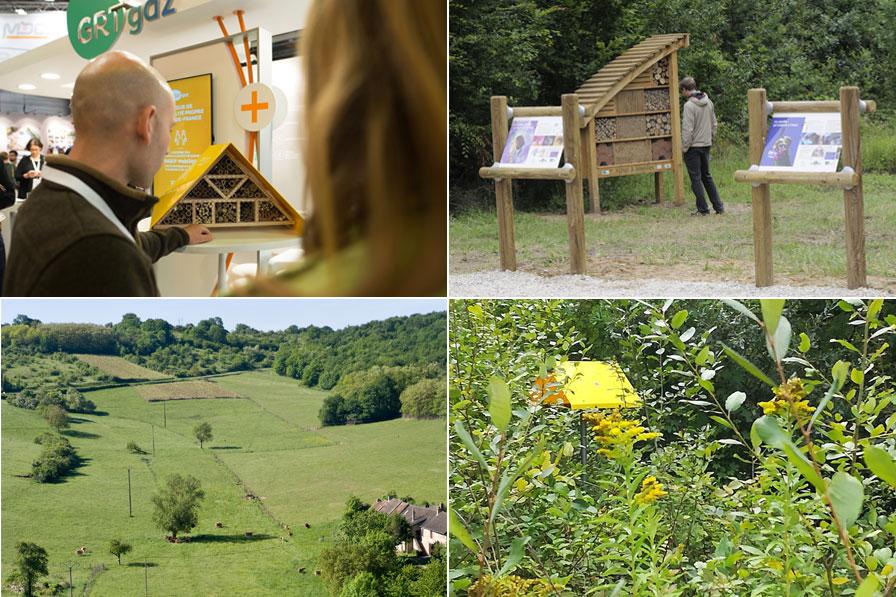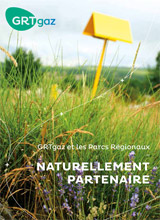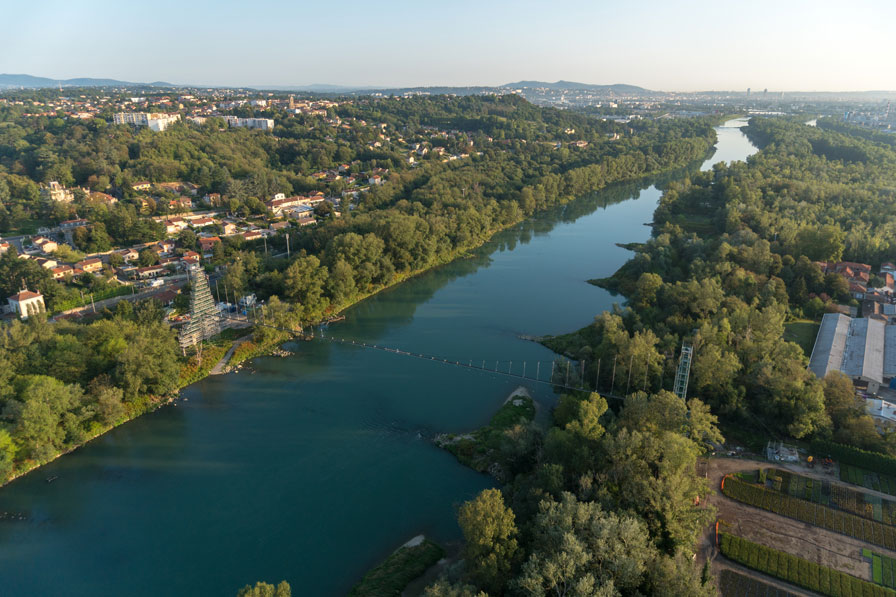Birds, insects, plants… How GRTgaz acts to preserve biodiversity on its sites

In 2021, by rejoining the “Enterprise committed to nature – Acte4Nature France” programme, GRTgaz has reinforced its commitment in favour of biodiversity. Since 2013, the group has signed several, very ambitious, voluntary commitments. How is this being expressed on the ground? How does the group protect natural resources on its construction sites, its 32,000 kilometres of easement strips and other sites?
Here are four examples of the iconic actions of this strategy rooted in the company’s raison d’être:
#1 On large construction sites, the "avoid, reduce, compensate" rule guides our actions
On large construction sites, “whenever the biodiversity is affected, an impact assessment is required”, explains Pierre Billet, biodiversity officer at GRTgaz. “In order of priority, any damage must be avoided, any impact reduced, and, if there are unavoidable residual impacts, damage must be compensated”.
Inaugurated in 2018, the large Val de Saône project is a good example in this regard. In the three regions and the four departments crossed by this project (188 km of gas pipeline and three stations built or renovated), GRTgaz implemented almost forty impact reduction or compensation measures, as well as signing several agreements with nature protection stakeholders. Species such as the white-legged crayfish, freshwater mussels, amphibians, and the four-leaf Marsilée aquatic fern were moved in certain places. At the same time, the shaping of rivers and wetlands, and the planting of hedges, recreated sustainable habitats.
“In order of priority, any damage must be avoided, any impact reduced, and, if there are unavoidable residual impacts, damage must be compensated”.Pierre Billet
Biodiversity officer at GRTgaz
#2 Late mowing can change everything
To guarantee access for its teams, GRTgaz must maintain its easement strips, 90% of which are located in rural areas. But cutting and mowing is not without consequences. And for good reason, as some animals seek this type of habitat to nest in and certain flowers grow on them, satisfying the needs of pollinator insects. “We therefore have to adapt our mowing to reduce its impact”, Pierre Billet explains.
With the teams on the ground, he identifies those easement strips where mowing must be delayed until the end of the summer. This year, at the request of the LPO (League for the Protection of Birds), work scheduled in the regional nature park of Pilat (Rhône) was thus postponed in order not to disturb the ground nesting of Montagu’s harrier, a protected species. Further south, in the Provence-Alpes-Cote d’Azur region, it was the situation for the Hermann’s tortoise! “We are about to make this practice the norm, wherever it is needed”, Pierre Billet is pleased to say. These easement strips are set to become real biodiversity corridors.
#3 Plant… to weed!
GRTgaz is also acting on its 5,000 small sites, often less than 300 sqm in size, where gravel and weed killers were, until recently, the norm. A year ago, a dozen pilot sites were chosen to try out a plant alternative: “Given our constraints, the only valid way is to use nature to control nature”, Pierre Billet states. The areas hitherto gravel covered (and treated) have now been seeded with herbaceous plants. Of course, it will take several years to find exactly the right recipe for each region, but the move toward “zero pesticides” is under way!
“Given our constraints, the only valid way is to use nature to control nature”Pierre Billet
#4 Make large industrial sites biodiversity refuges
As for larger sites, such as compression stations, some of their green spaces are scheduled to become “protected” areas for nature. In addition to the “zero pesticides” approach here, bee hives, insect hotels, nest boxes, and other small wet areas are being developed. Similarly, eco-grazing or differentiated management are becoming the norm. “Actions are under way in each of our stations and we are already seeing their positive results”, Pierre Billet enthuses.
Publications


